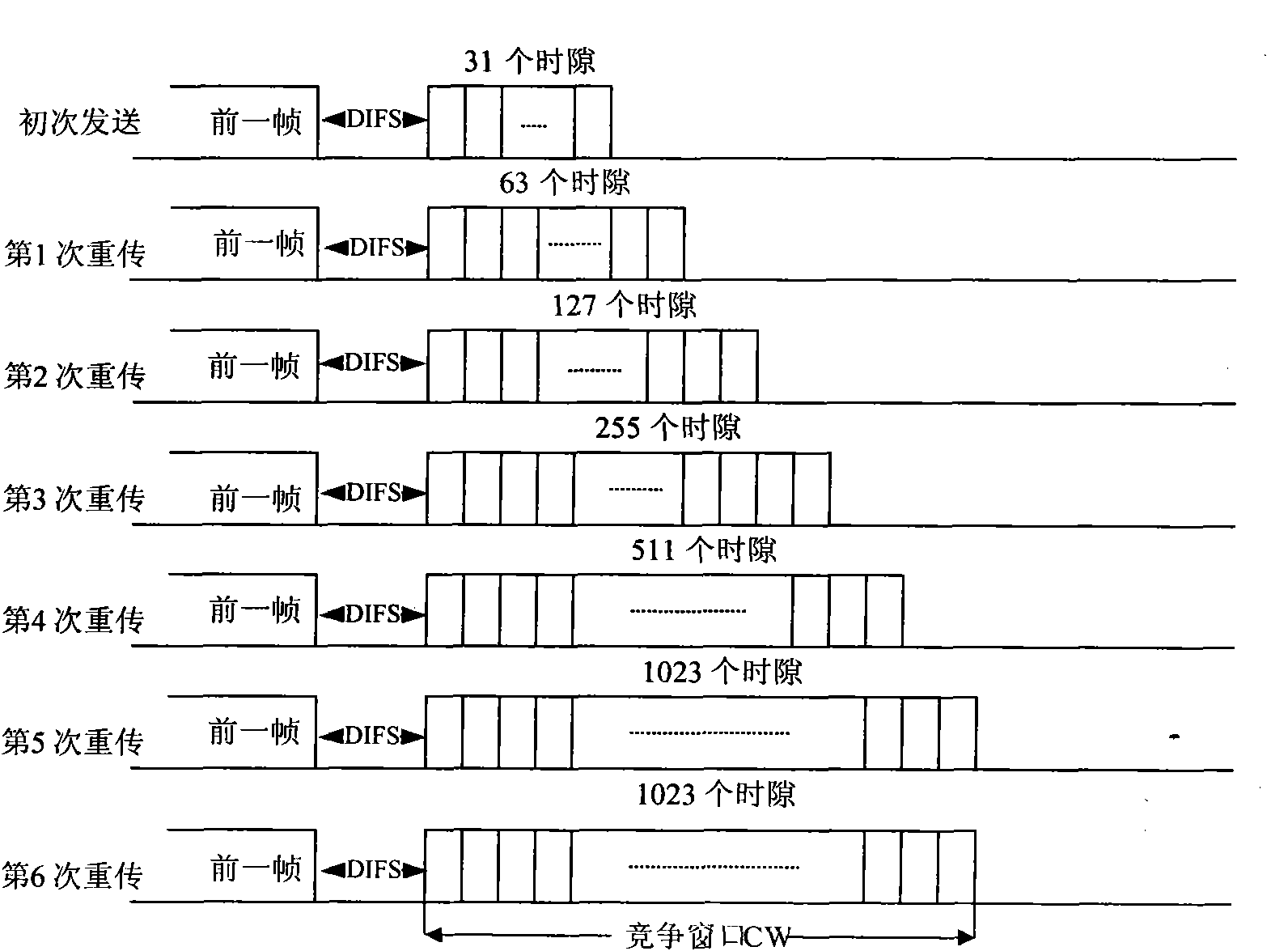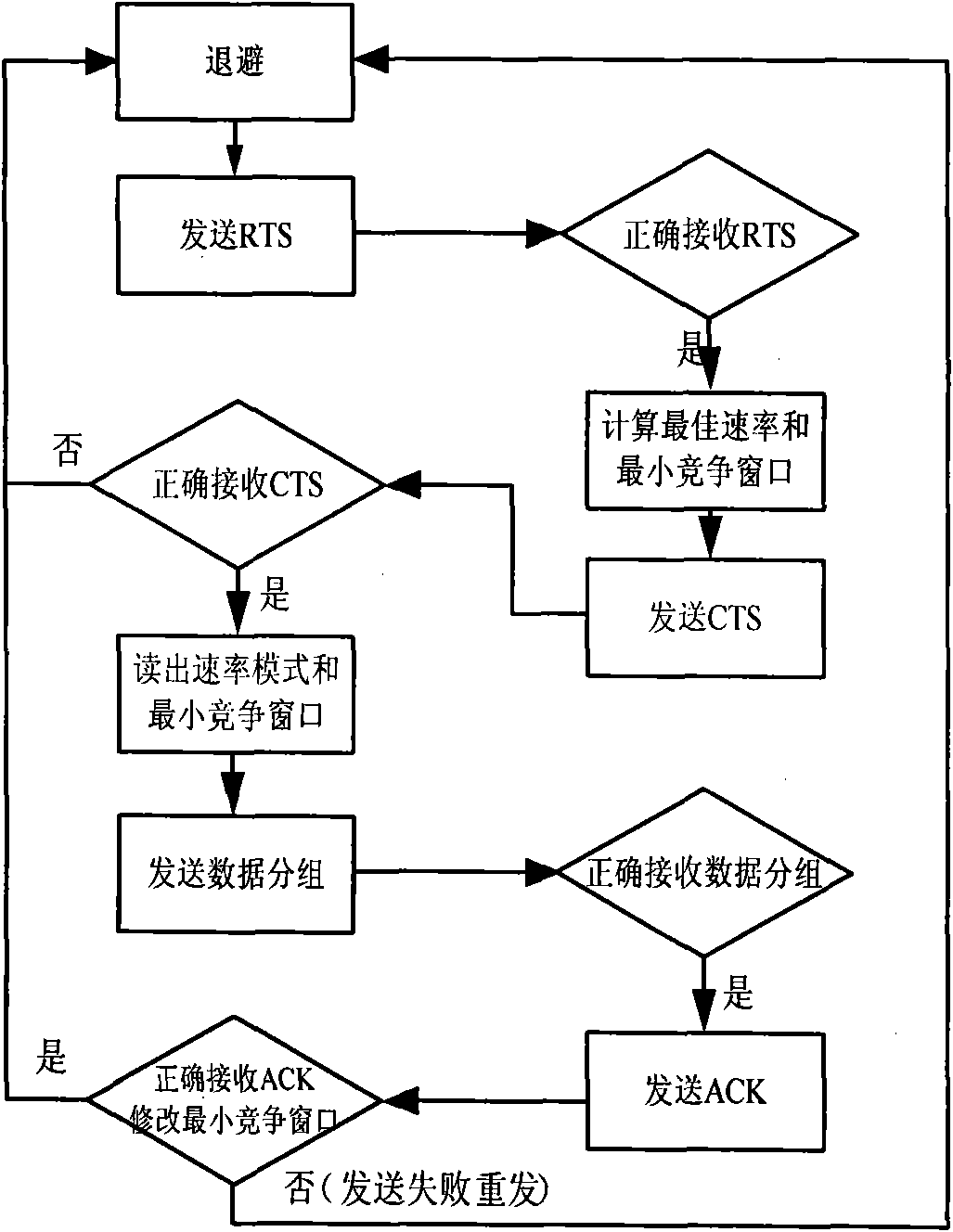Method for optimizing passing rate performance in wireless ad hoc network
A wireless self-organizing network, high-performance technology, applied in the field of communication, can solve the problems of low network throughput and low channel utilization
- Summary
- Abstract
- Description
- Claims
- Application Information
AI Technical Summary
Problems solved by technology
Method used
Image
Examples
Embodiment Construction
[0068] Based on the variable rate MAC of the optimal backoff mechanism, after the receiving node successfully receives the RTS packet, the receiving node calculates the frame error rate of the eight rate modes of IEEE 802.11a according to the signal-to-noise ratio of the RTS packet, and selects the frame error rate of the data packet through the formula The optimal transmission rate, and according to the number of nodes waiting to send data in the network, calculate the minimum contention window for the next backoff after this successful transmission. The specific flow chart is as figure 2 Shown:
[0069] The principle of judging the number of nodes waiting to send data in the current network is: for sending node i, when listening to the data packet sent by sending node j, read the B in the data of node j j , modify the parameter k of the current state, and k represents the number of nodes waiting to send data in the network; (B j =1 indicates that node j still has data pac...
PUM
 Login to View More
Login to View More Abstract
Description
Claims
Application Information
 Login to View More
Login to View More - R&D
- Intellectual Property
- Life Sciences
- Materials
- Tech Scout
- Unparalleled Data Quality
- Higher Quality Content
- 60% Fewer Hallucinations
Browse by: Latest US Patents, China's latest patents, Technical Efficacy Thesaurus, Application Domain, Technology Topic, Popular Technical Reports.
© 2025 PatSnap. All rights reserved.Legal|Privacy policy|Modern Slavery Act Transparency Statement|Sitemap|About US| Contact US: help@patsnap.com



